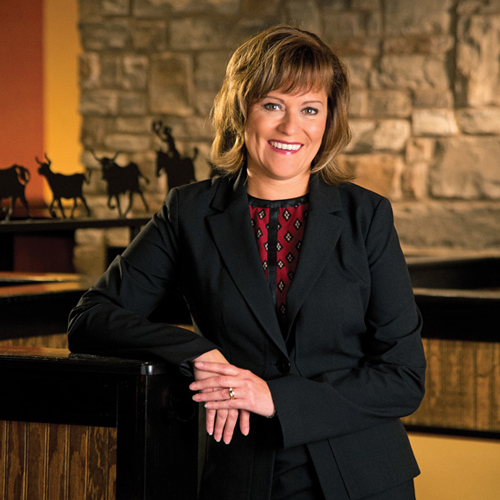When Bea Perez stepped into her role at Coca-Cola, the biggest challenge that presented itself was not being able to save the whole world.

Perez is Coca-Cola’s first chief sustainability officer. She leads the development of the sustainability vision the company intends to meet by the year 2020. “My biggest challenge is having to pick and choose where to focus our initiatives. There are so many problems to be solved in this world,” Perez explains, “however, we have a business to run and finite resources.”
Coca-Cola is defining itself as a leader in sustainability efforts worldwide, but Perez maintains that this isn’t the first time the group has set a trend. In 1917, Coca-Cola was the first company to build a relationship with the Red Cross. In 1934 it became the first to appoint a female member to its board of directors. The corporation has always been a first responder; Perez uses the example of the 2011 earthquake and tsunami that struck Japan. Coca-Cola’s CEO, Muhtar Kent, flew to Tokyo to be with the local teams. “We’re the kind of company that strives to be there the moment communities are in need,” she adds. Perez herself travels often to ensure Coca-Cola’s international network understands the vision and goals as it rolls out sustainability initiatives.
Coca-Cola initiatives began 128 years ago, but Perez is responsible for updating the company’s goals. The current goals have an objective of completion by 2020. The company is focusing on three key initiatives, the three W’s: water, women, and well-being.
Coca-Cola has a goal to make the company completely water-neutral.Currently, 68% of the water used in Coca-Cola beverages is replenished.The company is working to make it 100% by 2020.
Coca-Cola’s focus on water sustainability comes from water usage for the product itself. Being that water is the most prominent ingredient in Coca-Cola products, its management and distribution is globally critical. The goals set by the company are to improve water usage efficiency by 25 percent, protect healthy freshwater systems, and make the company completely water-neutral. Coca-Cola has invested more than $1 billion in wastewater treatment initiatives over the last decade. Currently, 68 percent of the water used in Coca-Cola beverages is replenished, and the company is working to make it 100 percent by 2020.
The company’s water initiatives are part of a larger plan to focus on the environment. Coca-Cola developed the first beverage package made with recycled material in 1991. Eighteen years later, Coca-Cola launched PlantBottle, which is made partially from plants and designated with a green stamp consumers can find on the label. Coca-Cola asserts that PlantBottle has removed the equivalent of 140,000 metric tons of potential carbon dioxide emissions, falling in line with the company’s goal to reduce carbon dioxide emissions by 25 percent throughout its value chain.
The second major focus area is on women. Perez notes that about 70 percent of Coca-Cola’s purchasers are women, but that isn’t the reason the company is championing empowerment efforts. Perez tells the story of Rosemary, a woman in Nairobi who is the second-largest distributor of Coca-Cola products in that country. Perez says with the training and guidance Coca-Cola offers, women around the world can experience financial stability and give back to their communities and families. Coca-Cola wants to economically empower five million women by 2020 by providing training, financial lending, and access to networks of peers and mentors. “We already have programs in place to empower more than 550,000 women across 44 countries,” Perez says. “My CEO says to me, ‘Yes, but that means we have four-and-a-half million left to go,’” she adds with a laugh.
Coca-Cola’s third focus area, well-being, targets obesity by helping consumers create the energy balance (calories consumed and calories burned) that’s right for them. The company promotes physical activity programs in 118 countries. An example is Triple Play, an after-school program in partnership with the Boys and Girls Clubs of America. Triple Play provides physical activity opportunities and nutrition education to youth. The company also reiterated its commitment to avoid target marketing to children younger than 13 years of age. “We have marketing responsibility guidelines for our entire business, and we don’t market to kids,” Perez explains. “We believe parents are the ones who should be driving the choice to purchase our products.”
There is still much left for Perez and other leaders at Coca-Cola to do to accomplish the company’s 2020 goals. Though six years seems like plenty of time, Perez acknowledges that her goals for Coca-Cola are lofty and meeting them will take focus, partnerships, and innovation. Even once those destinations are reached, Perez’s next duty will be to target and formulate goals for 2030.
“This is a heavy lift,” Perez says. “It’s not easy to hit the numbers we’ve set. We’ve set bold goals, we’ll have to give 100 percent to get there, and we’re prepared for that.”
LÍDER INSIGHT
“Sustainability can’t be just a side project. It has to be integral to how a corporation operates. We’ve accomplished integration at Coca-Cola, and we will continue to improve. Each employee is involved in this process, identifying opportunities in local communities. You also have to know what you stand for, and if you’re missing opportunities on the ground to make an impact, you have to listen to people on the local level.”

